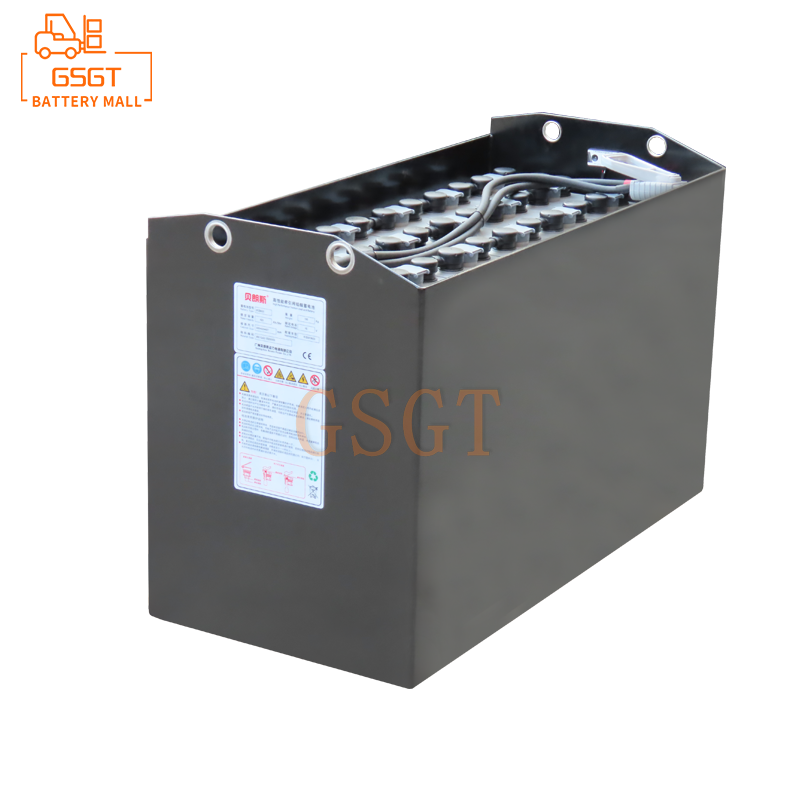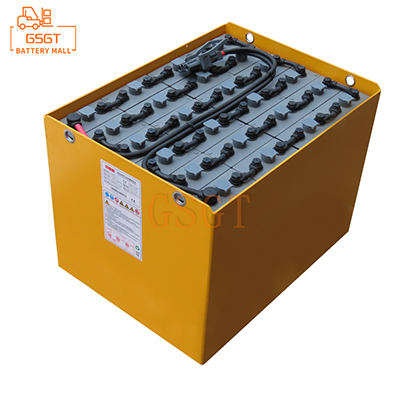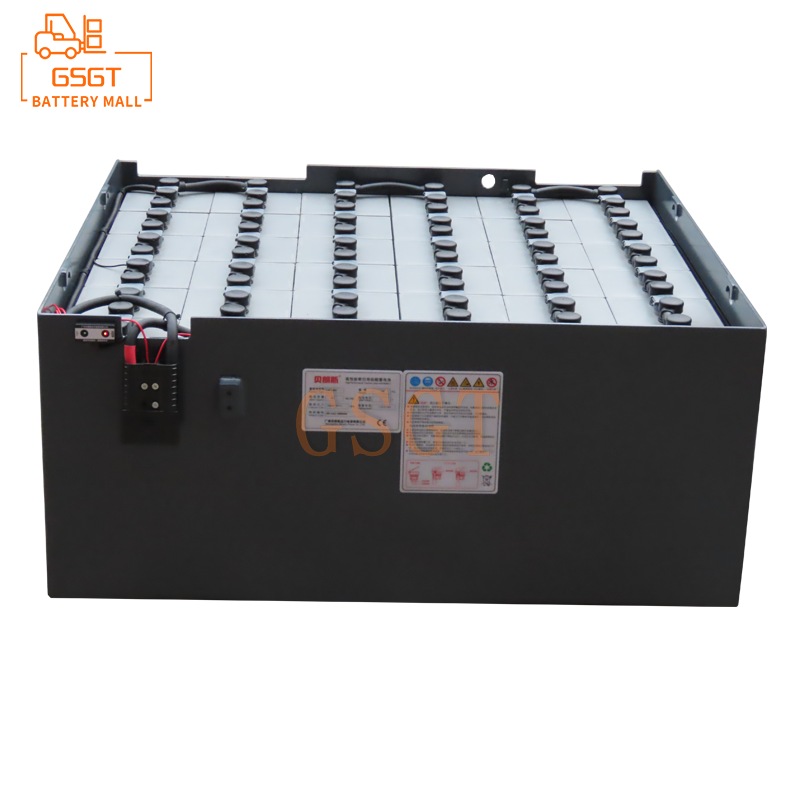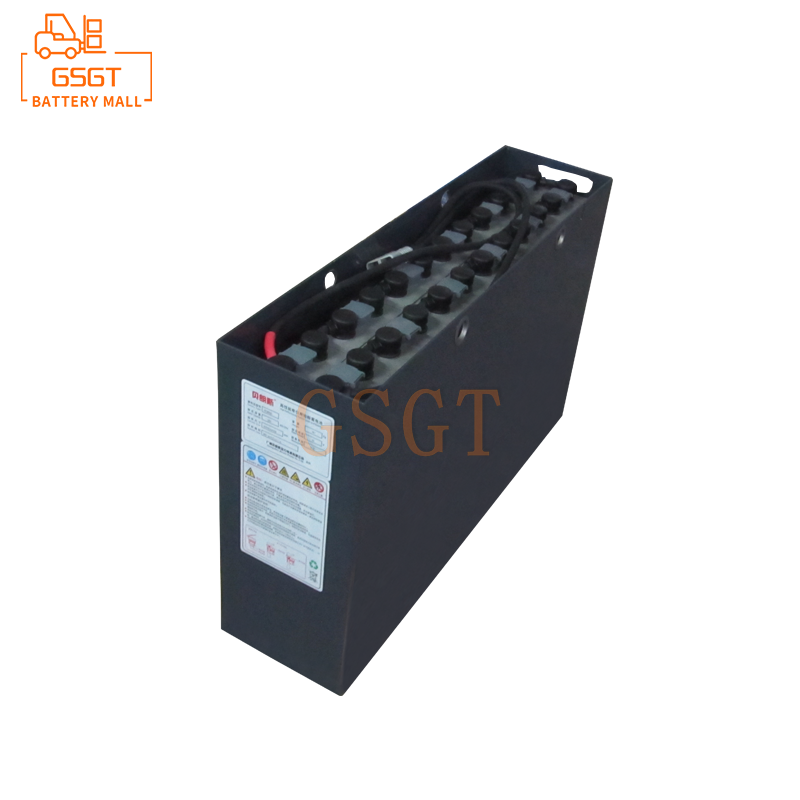Time:2025-05-09 11:34:43
Browse:673
1. Introduction
Forklifts, as indispensable handling equipment in modern logistics and warehousing fields, their power sources play a crucial role in the performance and working efficiency of forklifts. Lead-acid batteries have been widely used in forklift power systems due to their advantages such as relatively low cost and mature technology. However, the installation of lead-acid batteries in forklifts is not a simple operation. If they are not installed properly, it will not only affect the normal operation of the forklift but also bring safety hazards and even shorten the service life of the battery. Therefore, it is of vital importance to master the correct installation steps and norms for forklift lead-acid batteries. This article will elaborate on the relevant content in detail to provide valuable references for forklift users and maintenance personnel.
2. Preparations Before Installation
(1) Preparation of equipment and tools
1. Battery: Select the appropriate specification of lead-acid battery based on the forklift's model, rated voltage and required endurance. Ensure that the rated voltage of the battery matches the forklift motor and control system, and its capacity can meet the working requirements of the forklift. Large forklifts may require a voltage of over 80V and a battery with a larger capacity. At the same time, it is necessary to check whether the appearance of the battery is intact, and whether there is any damage or leakage, etc., to ensure that the battery is in good performance condition.
2. Installation Tools: Prepare a complete set of installation tools, including a wrench (for tightening the nuts of the battery connection wires), a screwdriver (if it is necessary to remove or install related fixed parts), insulating gloves (to prevent electric shock), insulating pads (placed in the installation area to provide insulation protection), a multimeter (for detecting the battery voltage and circuit connection status), etc. The tools should be intact and meet safety standards to ensure the smooth progress of the installation process.
3. Auxiliary equipment: Prepare hoisting equipment (such as battery hoisting frames or hoists specifically designed for forklifts, etc.) to safely hoist the battery onto the forklift. If the installation position of the forklift's battery is rather special, some auxiliary support tools may also be needed to ensure the stability of the battery during the installation process.
(2) Personnel training and popularization of safety knowledge
1. The personnel involved in the installation should possess certain electrical knowledge and forklift maintenance experience, and be familiar with the working principle and characteristics of lead-acid batteries. Before installation, organize relevant personnel for training to enable them to understand the installation steps, specification requirements and possible safety risks.
2. Emphasize the importance of safe operation to the installers and popularize safety knowledge. For instance, lead-acid batteries contain corrosive substances such as sulfuric acid. If they come into contact with the skin or eyes, rinse immediately with plenty of water and seek medical attention promptly. During the installation process, it is necessary to prevent short circuits between the positive and negative terminals of the battery to avoid dangers such as fire or explosion. At the same time, remind the installers to always wear personal protective equipment such as insulating gloves and goggles during the operation.
(3) Inspection of installation environment
1. Ensure that the installation area is dry and well-ventilated. Avoid installing the battery in a damp, flammable gas or dusty environment. A damp environment may cause leakage of electricity from the battery casing, leading to electric shock accidents. Contact of flammable gases or dust with sparks produced by the battery may cause an explosion.
2. Clean the installation area, remove debris and obstacles, and provide sufficient operating space for the installation work. Check whether the installation position of the forklift battery is clean and free of foreign objects. If necessary, carry out cleaning treatment to ensure that the installation surface is flat and stable, so as to guarantee the stability of the battery after installation.
3. Installation Steps for Lead-Acid Batteries in Forklifts
(1) Disassembly of Old batteries (If it is a battery replacement)
1. Turn off the power switch of the forklift to ensure it is completely powered off. For forklifts equipped with key switches, remove the key and keep it properly to prevent the forklift from accidentally starting during disassembly.
2. Use a wrench to loosen the nuts of the battery connection wires. Disassemble in the order of removing the negative terminal (usually the black connection wire) first and then the positive terminal (usually the red connection wire). This is because removing the negative terminal first can prevent the tool from accidentally touching the metal parts of the vehicle body and causing a short circuit when removing the positive terminal. When disassembling the connecting wires, be careful to prevent them from coming into contact with the vehicle body or other metal parts to avoid short circuits.
3. Remove the battery's fixing devices, such as bolts and clips. Carefully remove the old battery from the forklift. Hoisting equipment can be used for lifting and transportation to avoid collision or damage to the battery during the handling process. Place the used batteries in the designated recycling area and handle them in accordance with relevant environmental protection regulations.
(2) Installation of new batteries
1. Carefully lift the new battery to the battery installation position of the forklift through the hoisting equipment. Pay attention to keeping the battery stable and avoid excessive tilting that may cause the electrolyte to overflow. During the hoisting process, it is necessary to ensure that the hoisting equipment is firm and reliable. The operator should stand in a safe position to prevent the battery from falling and causing injury.
2. Adjust the position of the battery to ensure it is accurately placed in the installation slot, and make sure the battery is closely attached to the installation slot without any obvious shaking. If necessary, auxiliary items such as gaskets can be used for fine-tuning to ensure the installation accuracy of the battery.
3. Install the battery's fixing device and firmly secure the battery to the forklift using bolts or clips. When tightening the bolts, they should be tightened in the diagonal order one by one to ensure uniform tightening force in all directions and prevent the battery from loosening due to vibration during the operation of the forklift. The tightening force should be moderate. It should neither be too loose to cause the battery to shift nor too tight to damage the battery casing.
4. Connect the wires to the battery in the order of connecting the positive terminal first and then the negative terminal. Connect the terminals of the connecting wire tightly to the terminals of the battery. Use a wrench to tighten the nuts to ensure a firm connection and good contact. A layer of Vaseline or special conductive paste can be applied to the connection between the terminal post and the connecting wire terminal to prevent oxidation and corrosion and improve the electrical conductivity.
5. Check whether all the connecting wires are connected correctly and firmly, and whether there is any loosening or poor contact. Use a multimeter to measure the terminal voltage of the battery and confirm that the voltage is normal and meets the working requirements of the forklift. At the same time, check whether there are any short circuits or open circuits in the circuit connections to ensure the safety and reliability of the electrical system.
4. Installation Specifications and Precautions
(1) Electrical Connection Specifications
The specifications of the connecting wires should comply with the electrical requirements of the forklift and have sufficient electrical conductivity and insulation performance. Generally speaking, the cross-sectional area of the connecting wire should be selected based on the capacity of the battery and the working current of the forklift to ensure that it does not generate heat due to excessive current during operation, or even cause a fire.
The length of the connecting wire should be moderate, avoiding being too long or too short. Excessively long connection wires may increase resistance, leading to an increase in voltage drop and affecting the performance of the forklift. If the connection line is too short, it may be pulled by force due to vibration and other reasons during the operation of the forklift, causing the connection to become loose or damaged.
3. All electrical connection points should be reliably fixed and insulated to prevent connection loosening or insulation layer damage due to vibration, friction and other reasons during the operation of the forklift, which may cause leakage or short circuit accidents. For exposed connection terminals, insulating sleeves should be used for protection.
(2) Safety Regulations
1. During the entire installation process, smoking or the use of open flames is strictly prohibited. Lead-acid batteries produce flammable gases such as hydrogen during charging and discharging. Encountering an open flame may cause an explosion. At the same time, avoid using tools or equipment that may produce sparks in the installation area.
2. During the operation, installers should always keep their hands dry to avoid an increased risk of electric shock due to moisture. If you accidentally come into contact with corrosive substances such as sulfuric acid, you should immediately follow the correct first aid methods for treatment.
3. After installation is completed, a comprehensive inspection of the forklift's electrical system should be carried out to ensure there are no potential safety hazards such as leakage or short circuit. Leakage detectors and other equipment can be used for detection, and at the same time, check whether all the functions of the forklift are normal, such as starting, traveling, lifting and lowering, etc.
(3) Daily Maintenance and Inspection Specifications
1. Regularly check whether the connection wires of the battery are loose or oxidized. If any are found, they should be tightened and cleaned in time. It is generally recommended to inspect at least once a week. For forklifts with a higher usage frequency, the inspection frequency should be appropriately increased.
2. Check the electrolyte level of the battery to ensure it is within the specified range. If the liquid level is too low, distilled water or special lead-acid battery electrolyte should be added, but tap water must not be added to avoid impurities in the water affecting the performance of the battery. When adding electrolyte, be careful to avoid overflow. If overflow occurs, it should be rinsed clean with clear water in time and neutralized.
3. Regularly charge and discharge the battery for maintenance. Charge it in accordance with the requirements of the battery's user manual to avoid overcharging or overdischarging. Overcharging can cause the battery to heat up, deform the plates and shorten its service life. Over-discharging will cause the capacity of the battery to decrease and even damage it. At the same time, it is necessary to regularly perform deep discharge and full charge on the battery to activate the active substances on the battery plates and improve the performance of the battery.
5. Conclusion
The correct installation of lead-acid batteries for forklifts is an important link to ensure the safe and efficient operation of forklifts. By making thorough preparations before installation, strictly following the installation procedures, and adhering to relevant installation norms and precautions, various problems caused by improper installation can be effectively avoided, the service life of the battery can be prolonged, and the working efficiency of the forklift can be improved. Meanwhile, regular maintenance and inspection are also key to ensuring the performance of the battery and the normal operation of the forklift. It is hoped that the installation steps and standard guidelines provided in this article can offer valuable references for forklift users and maintenance personnel, promoting the standardization and normalization of forklift lead-acid battery installation work.

$2450

$3405

$4045

$1060

MESSAGE
Professional And Efficient
Security
Affordable Price
Professional Services